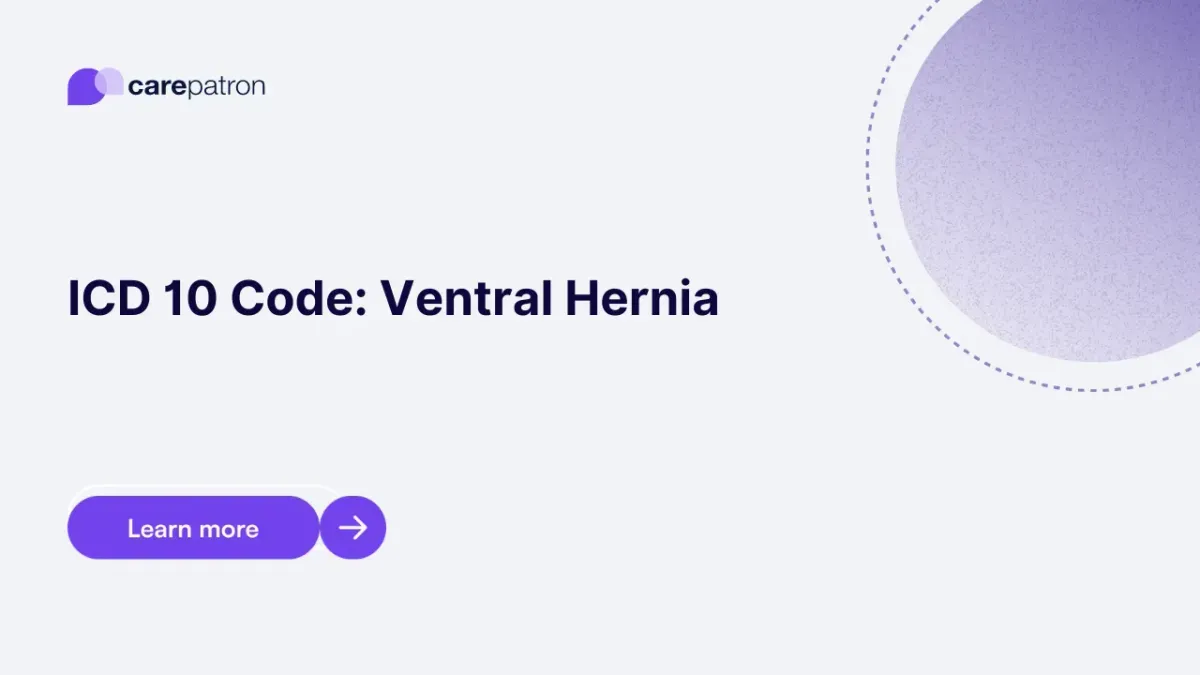
Ventral Hernia ICD-10-CM Codes | 2025
Explore 2025 ICD-10-CM codes for ventral hernias, including types, symptoms, complications, and billing.
Use Code
Commonly asked questions
Healthcare professionals can reduce the risk of incisional hernias by using proper surgical techniques, closing incisions with strong, layered sutures, and minimizing tension on the wound. Postoperative care is also critical and this includes infection prevention, managing intra-abdominal pressure (e.g., through weight control and avoiding heavy lifting), and providing patients with clear recovery guidelines to support proper healing.
A person may notice a visible bulge or swelling in the abdomen, especially when standing, coughing, or straining. Other common symptoms include discomfort, a feeling of pressure or heaviness, and pain at the hernia site, which may worsen with activity and improve with rest.
Ventral hernias are typically diagnosed through a physical examination and confirmed with imaging studies such as an ultrasound or CT scan. These tests help determine the hernia's size, location, and whether complications like obstruction or strangulation are present.
EHR and practice management software
Get started for free
*No credit card required
Free
$0/usd
Unlimited clients
Telehealth
1GB of storage
Client portal text
Automated billing and online payments
